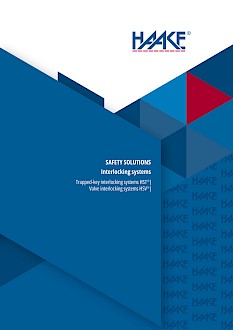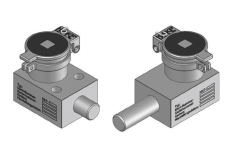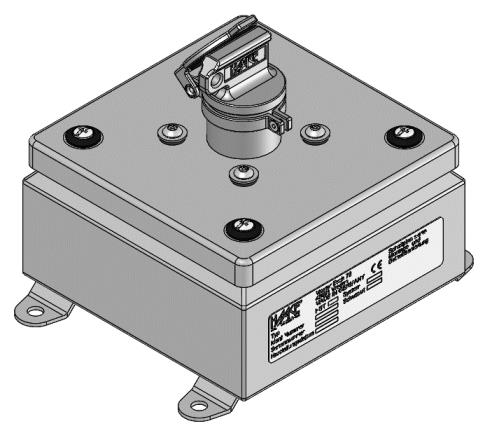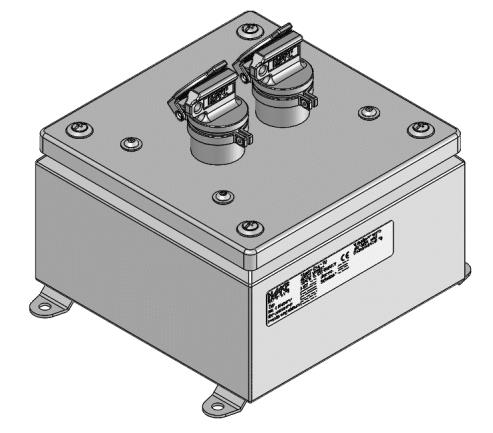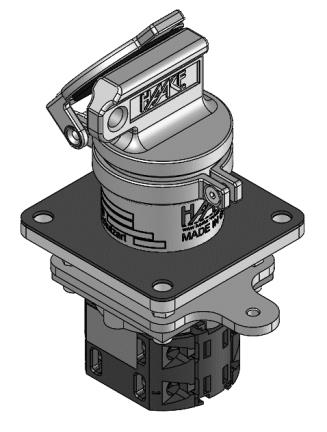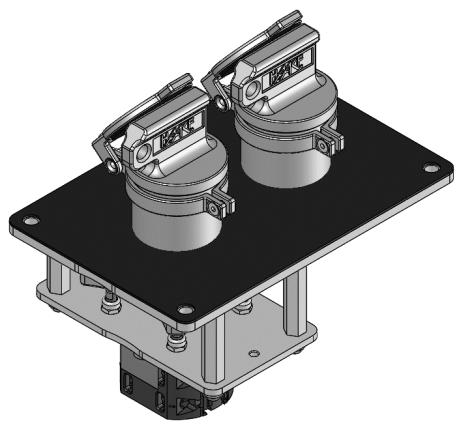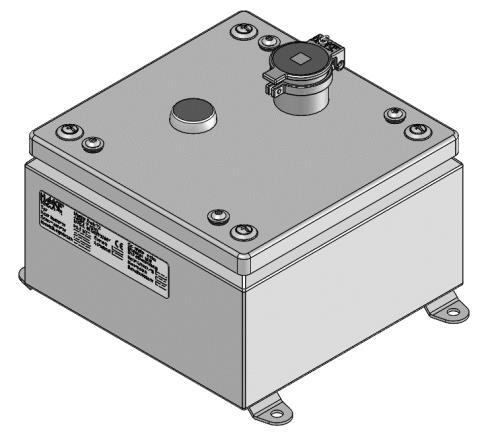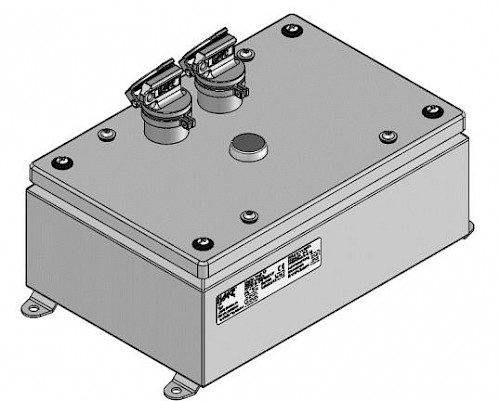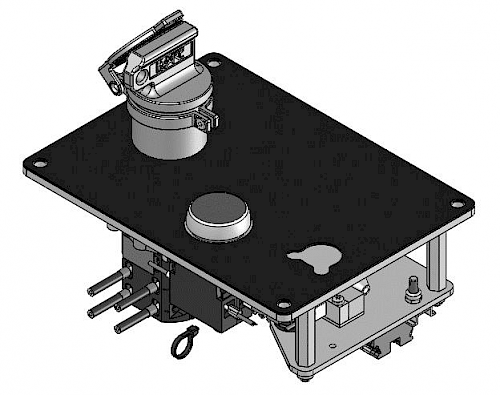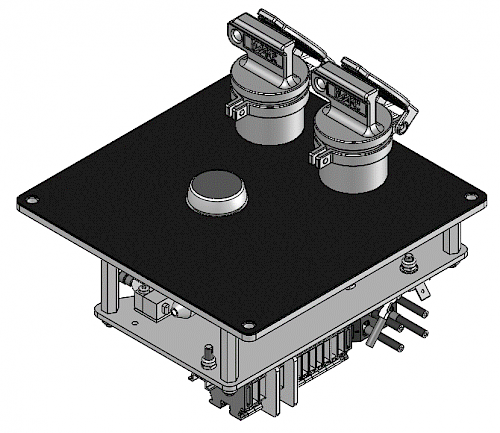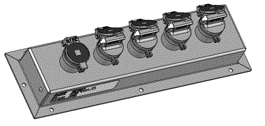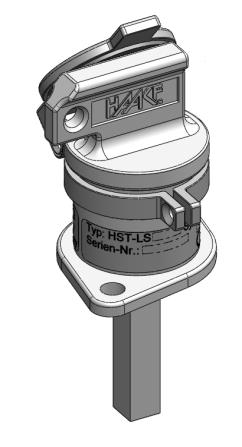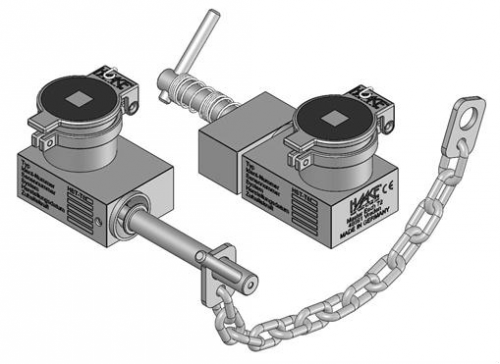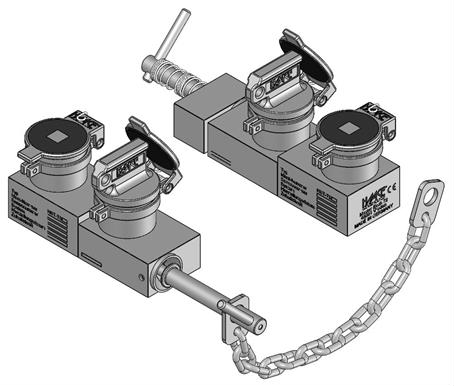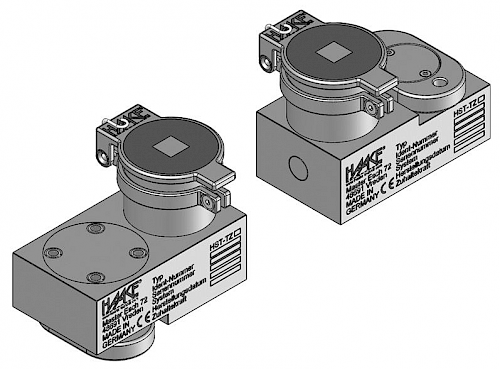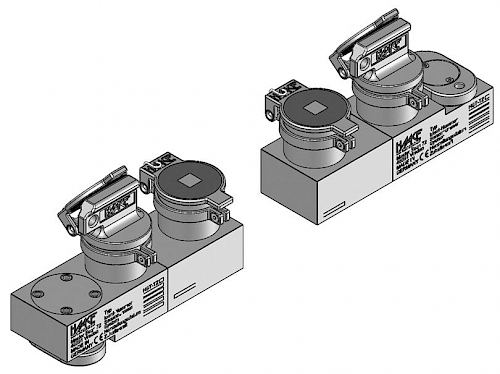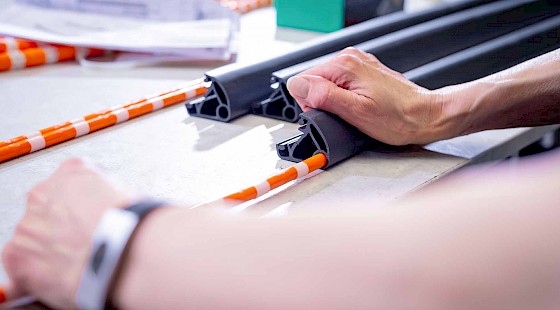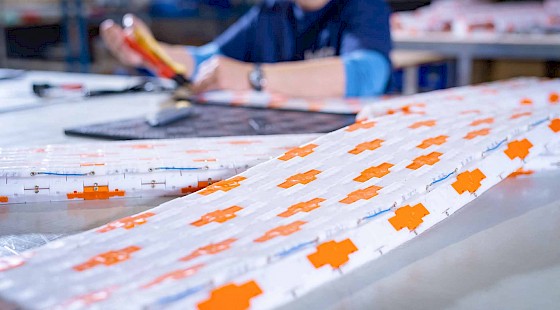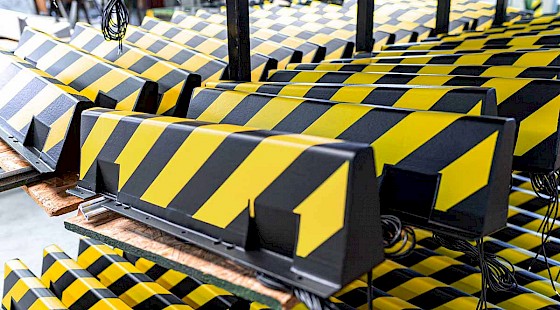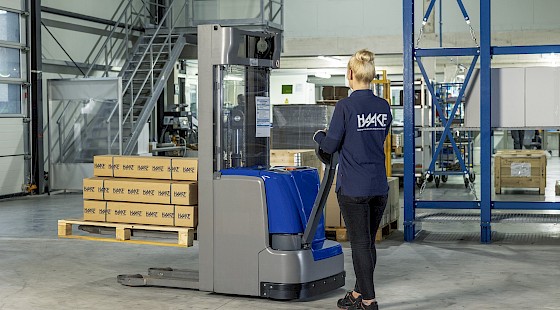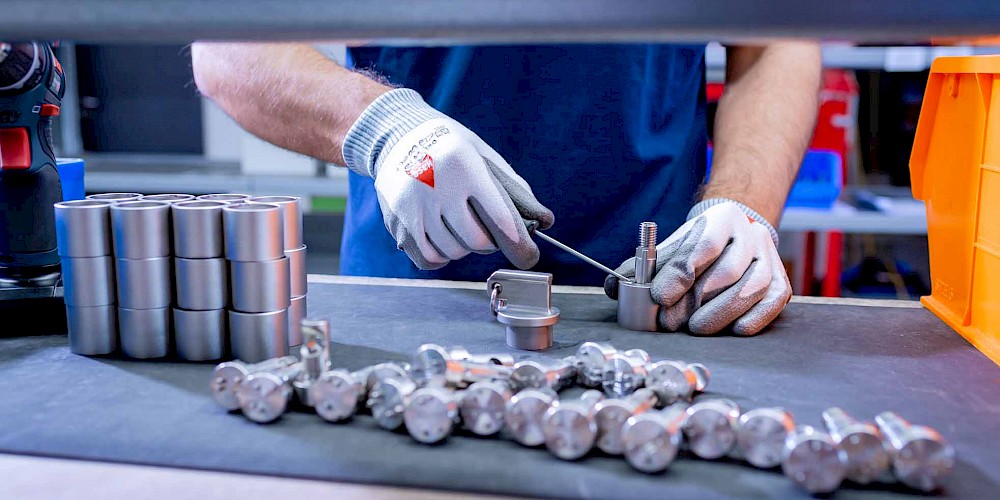
Trapped-Key Interlocking Systems HST
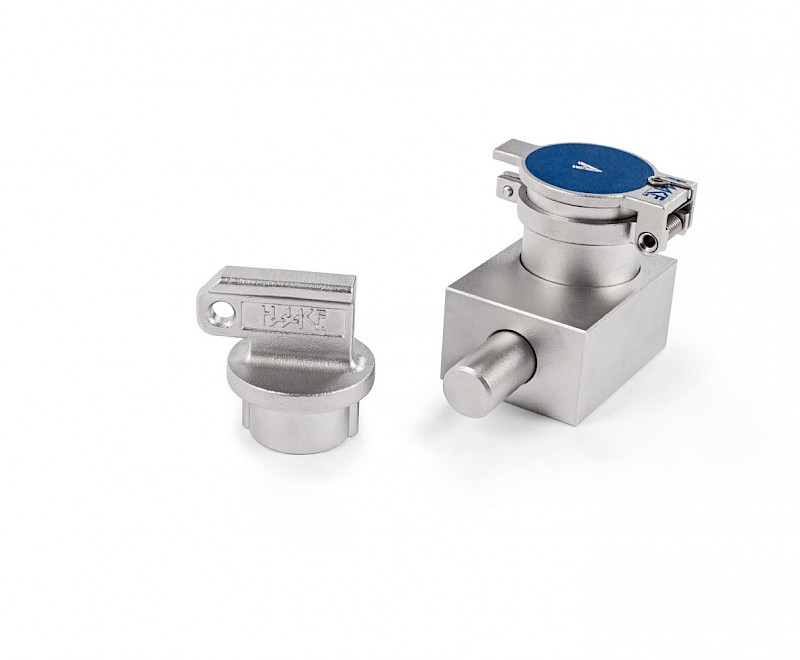

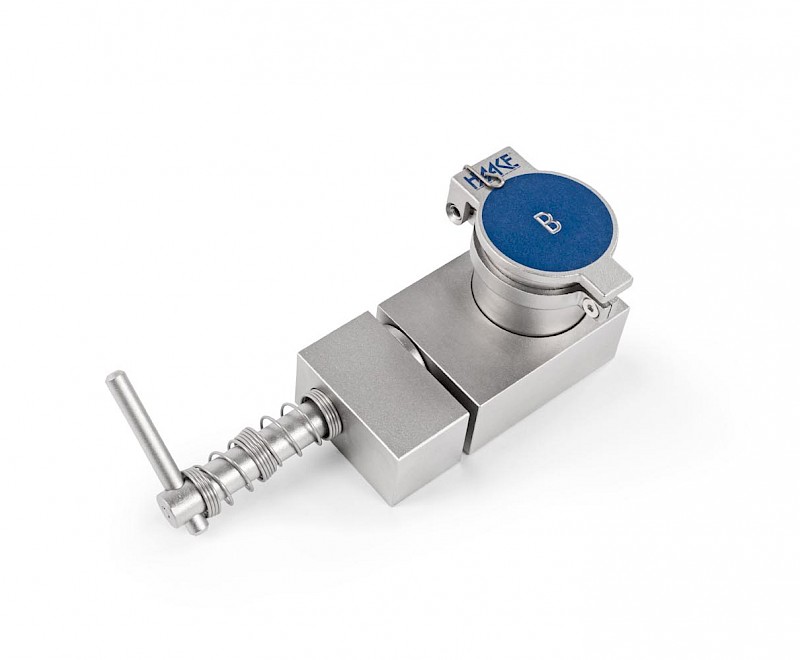
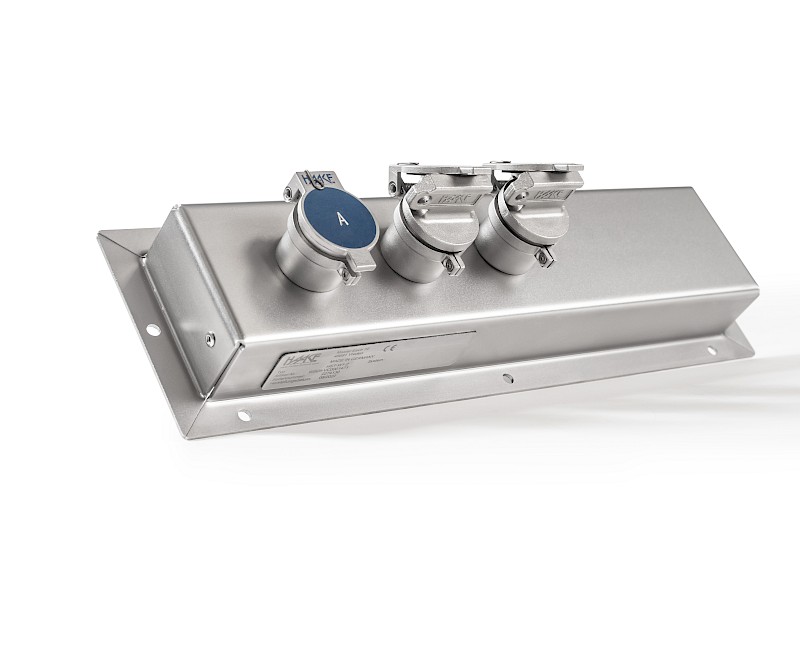
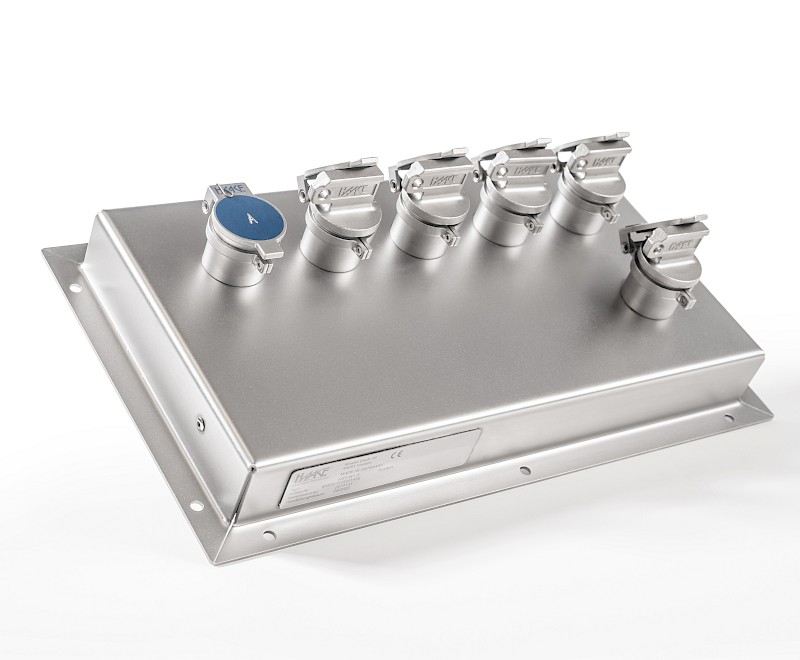
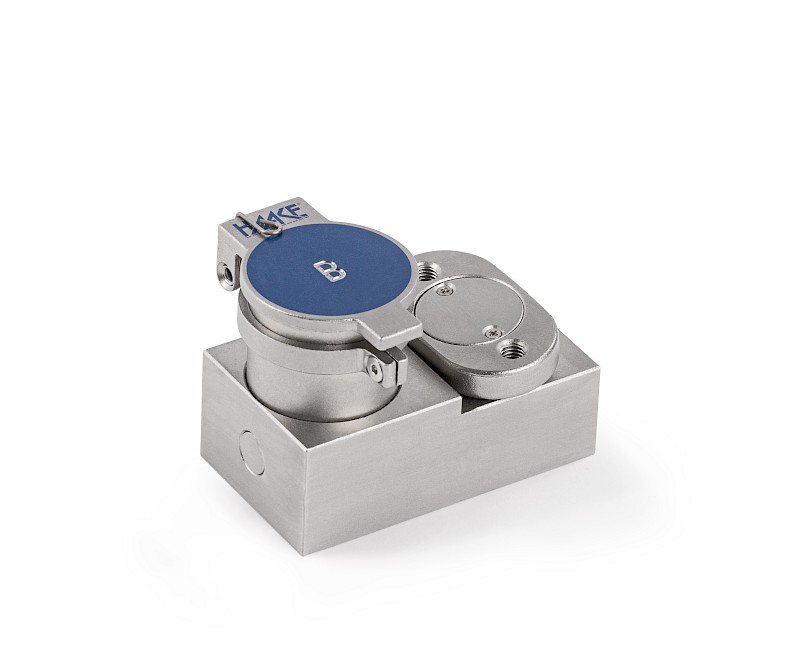
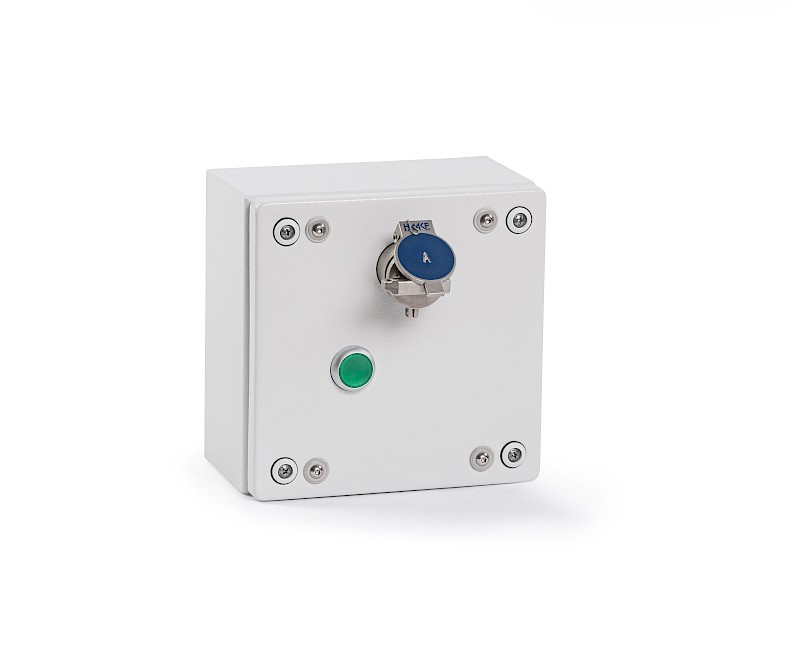
To protect the operator, most often dangerous machines and systems are fitted with protective barriers and gates. Apart from using this kind of so-called separating protective devices, it is essential to prevent the triggering of a potentially dangerous machine function under specified conditions in order to ensure the safety of the operating personnel. Which means:
- the dangerous machine or system must be stopped if the safety door is not closed and locked.
- Any functioning of the dangerous machine must remain completely disabled or stopped for as long as the safety door is not closed and locked.
Such safety critical tasks are performed by so-called key transfer systems.
What is a trapped-key interlocking system?
A trapped-key interlocking system, also known as key transfer system, consists of at least two components and is intended to prevent the execution of dangerous machine functions under predefined conditions. The core of the system is an individually coded key, which is automatically transferred between the components of a key transfer system. This key transfer typically takes place between the switch-off system of a machine and a so-called guard locking device which is used, for example, to open or lock the maintenance cover of that machine.
Functionality, structure and case studies
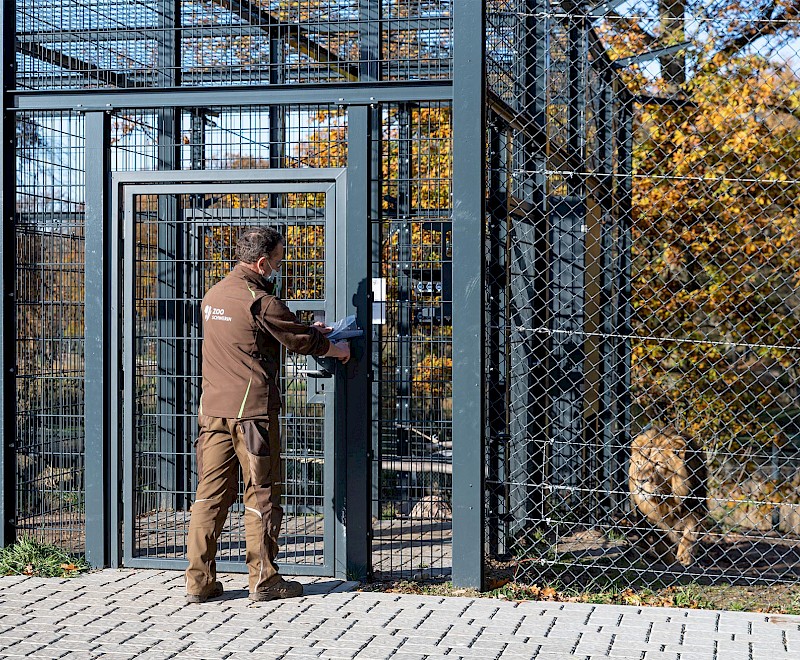
Based on the safety requirements of your individual application, we will be happy to develop your own customised key transfer system. We offer a broad range of various components for your key transfer system.
With our individual trapped-key interlocking system HST we have not only created a possibility for securing plants and machines, but also a safety system for extremely demanding zoo enclosures. For more information of the HST application in zoos, please follow the link https://www.haake-technik.com/en/anwendungsbereiche/zoo/.
The following interactive process graphics give you a brief overview of how the HAAKE HST components can be used to safeguard frequently occurring hazardous areas of systems and machines, e.g. for maintenance:
Case Study - Safeguarding of hazardous areas with whole body access
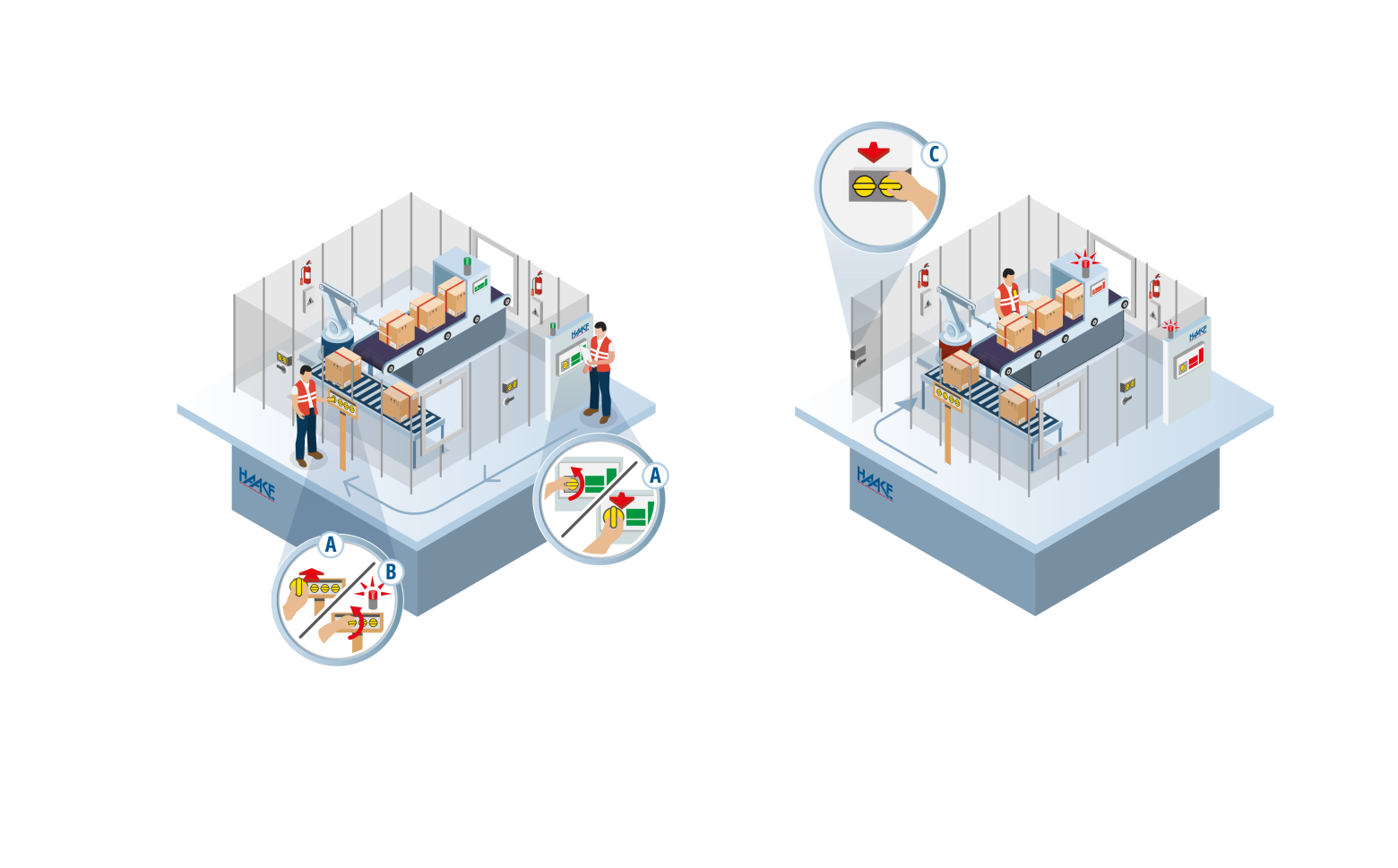
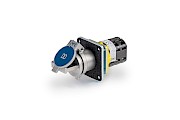
To perform maintenance work, the robot must be shut down. At the control panel outside the fenced danger zone, the robot can be shut down by rotating and removing key A from the HAAKE® key operated switch HST®-S.
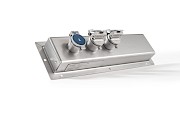
Since the danger zone can be accessed through two guard doors, the use of a HAAKE® key exchange device HST®-W is required. By inserting key A, the differently coded keys B are released. After removing key B, key A is trapped.
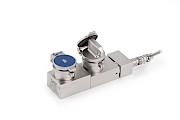
By inserting key B into the HAAKE® access lock HST®-TS2, the guard door is unlocked, and the personnel key C is released. The employee now carries the personnel key C and enters the hazardous area to perform maintenance, for example. While the employee carries this personnel key C, the previous keys are trapped, and the system cannot be started. Through this forced key transfer, the employee can perform maintenance exclusively in a safe state. After completing the maintenance, the keys must be returned in reverse order to release the respective previous key. The robot can now be restarted once all keys have been returned. This inevitably ensures that no employee is in the danger zone when the robot starts.
Case Study - Safeguarding a machine with stopping time
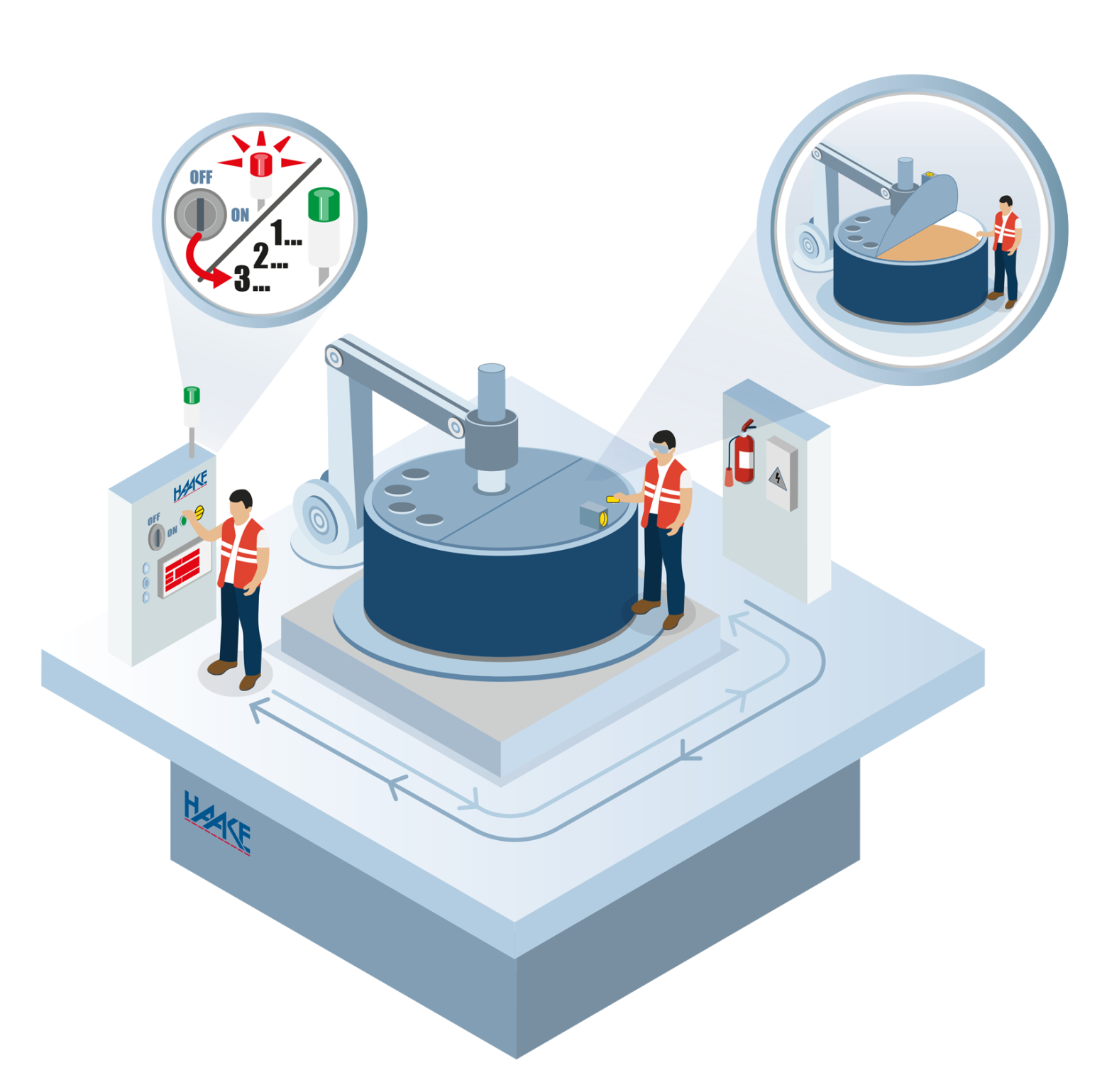
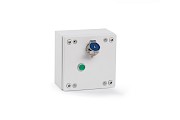
To perform maintenance work, the mixer must first be shut down at the control panel using the HAAKE® keyoperated solenoid-controlled switch HST®-M.
Since the mixer does not come to a complete standstill immediately after shutdown, the signal from a standstill monitor or time relay must be waited for.
Only when this signal arrives at the switch element with locking device and the green indicator light of the indicator key-operated solenoid-controlled switch is illuminated can the switch be pressed, and key A can be removed.
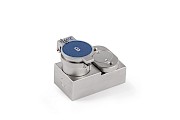
By inserting key B into the HAAKE® access lock HST®-TS2, the guard door is unlocked, and the personnel key C is released.
The employee now carries the personnel key C and enters the hazardous area to perform maintenance,for example.
While the employee carries this personnel key C, the previous keys are trapped, and the system cannot be started.
Through this forced key transfer, the employee can perform maintenance exclusively in a safe state.
After completing the maintenance, the keys must be returned in reverse order to release the respective previous key.
The robot can now be restarted once all keys have been returned.
This inevitably ensures that no employee is in the danger zone when the robot starts.
Overview of the most important system components:
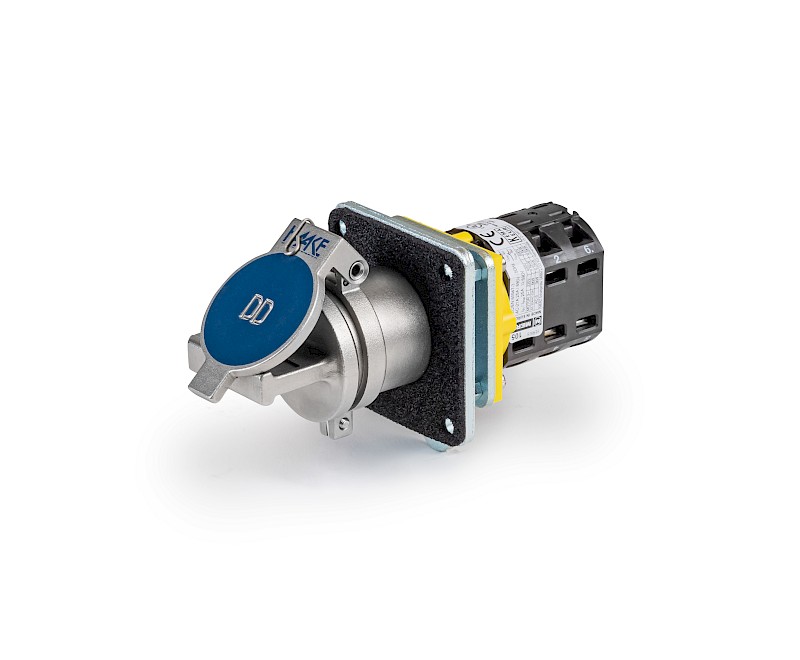
Switching element HST® S
The switching element HST®-S is used to switch off a machine / danger point. A switch is actuated by turning a key. The key is released and can be removed. The switching element HST®-S is supplied as a panel version (as shown) or in metal case.
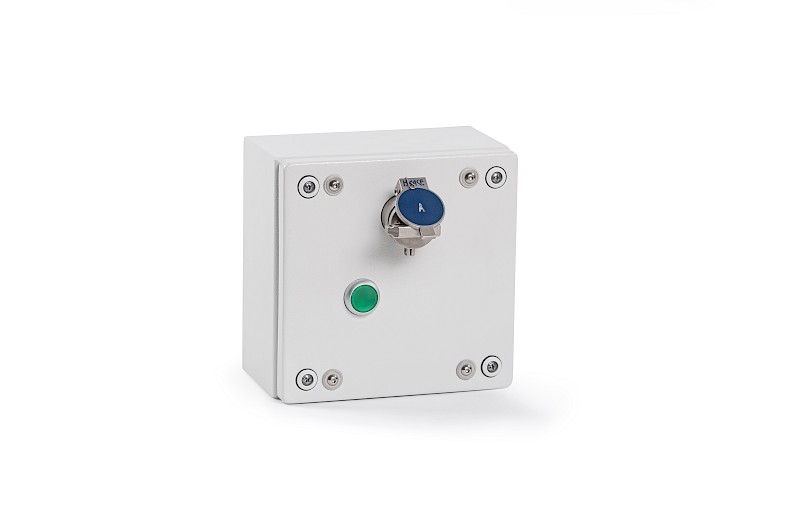
Solenoid controlled switch HST®-M
The solenoid-controlled switch HST®-M is used on machines with run-down time. The key can be removed only if a signal from the machine control is present that the dangerous movement has stopped. An illuminated pushbutton indicates the standstill. You have to press this button to remove the key.
Turning the key activates a rotary switch with selectable contact configuration. The solenoid-controlled switch HST®-M is supplied as a panel version (as shown) or in metal case. Versions with one and two locks are available.
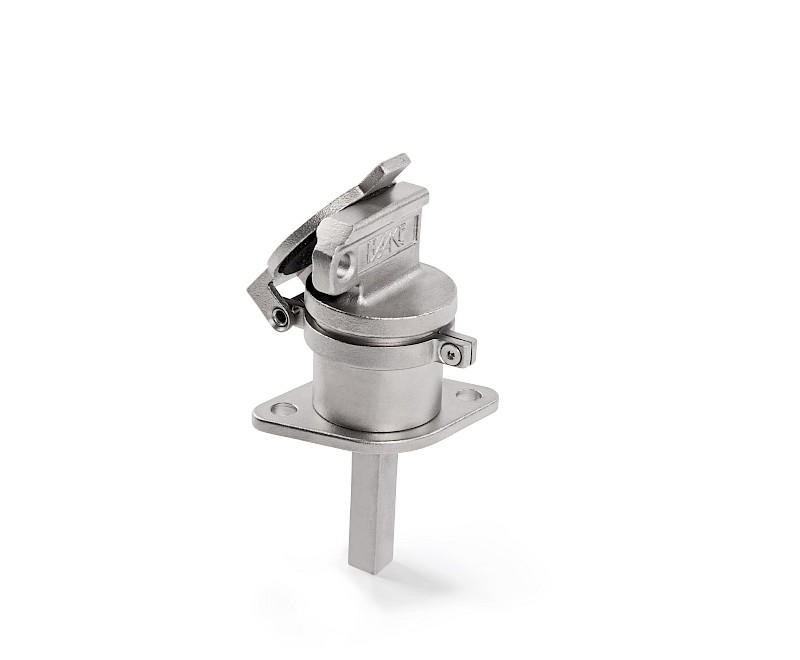
Interlocking device HST®-LS
The interlocking device HST®-LS is used as an attachment to existing switchgear or control units. The standard version is equipped with a 9.5 mm square bolt for actuating levers or special switching device adapters. By turning the key, the switching device is turned off; the key is released and can be removed.
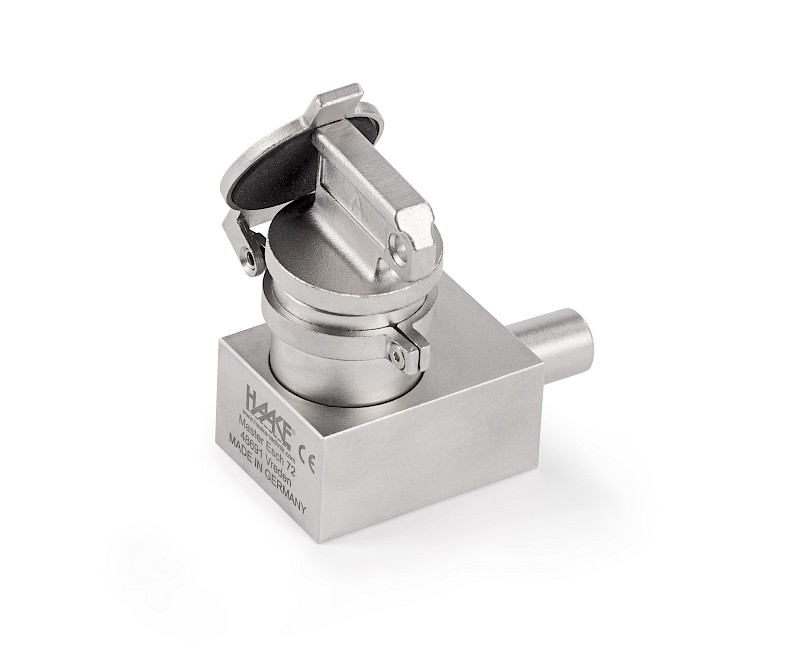
Bolt lock HST® B
The bolt lock HST®-B is used for locking switching devices (circuit breakers, disconnectors, earthing switches etc.). By turning the key, the bolt moves into a corresponding recess on the handle or the control unit of the switching device and locks. The key can be removed only in this position.
The bolt lock HST®-B is not suitable for locking guard doors, flaps or similar.
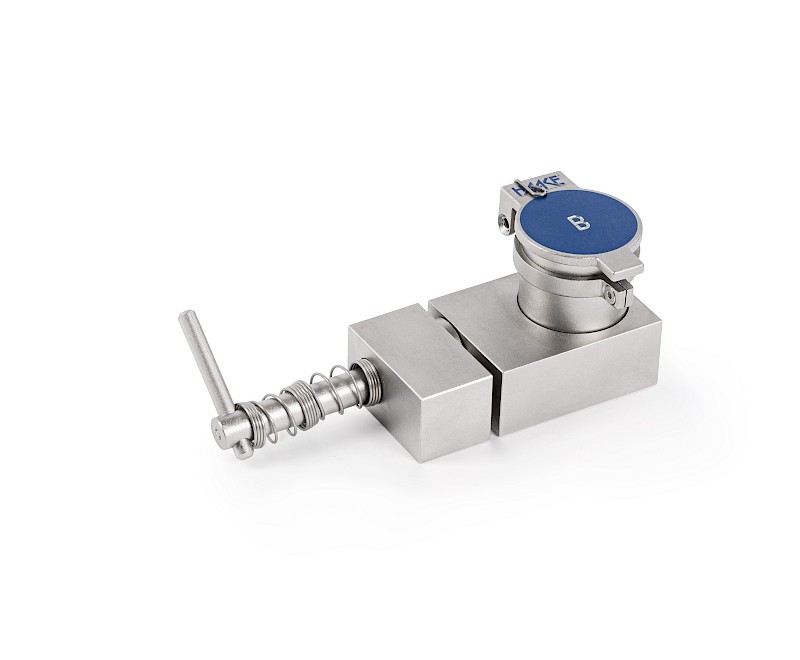
Access lock HST®-TS1
The access lock HST®-TS1 consists of a lock and a locking bolt part and can be used on swing and sliding doors or flaps. Versions with different locking bolt positions are available.
Insert the key to open the guard door or flap. The locking bolt can then be rotated by 90 ° and removed. The key is trapped.
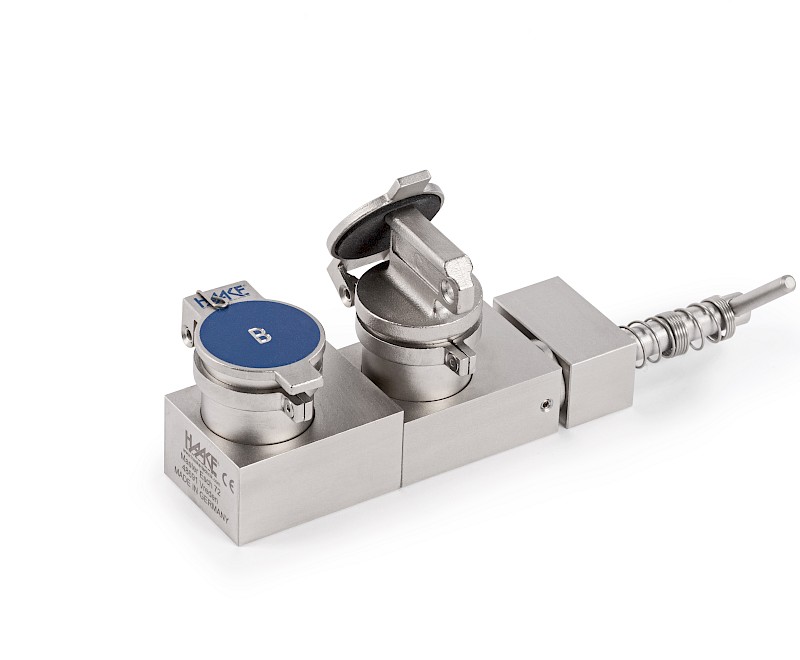
Access lock HST®-TS2
The access lock HST®-TS2 features 2 locks and is used in applications with accessible area. The operator takes the second, personal key into the danger zone. This personal key can also be used for other functions (e.g. teach mode), or the operator can carry the personal key along as described previously.
Before the personal key visible in the picture can be removed, a matching key must first be inserted and turned in the empty lock part. The personal key can now be removed, and the previously inserted key is trapped.

Access lock HST®-TZ1
The access lock HST®-TZ1 features a flexible slam-type locking actuator mechanism and can be used without any problems on misaligned or sagging doors and flaps.
Different versions with numerous actuator orientations are available. Insert and turn the key to open the guard door or flap. The actuator is pushed out of the lock part. The key is trapped.
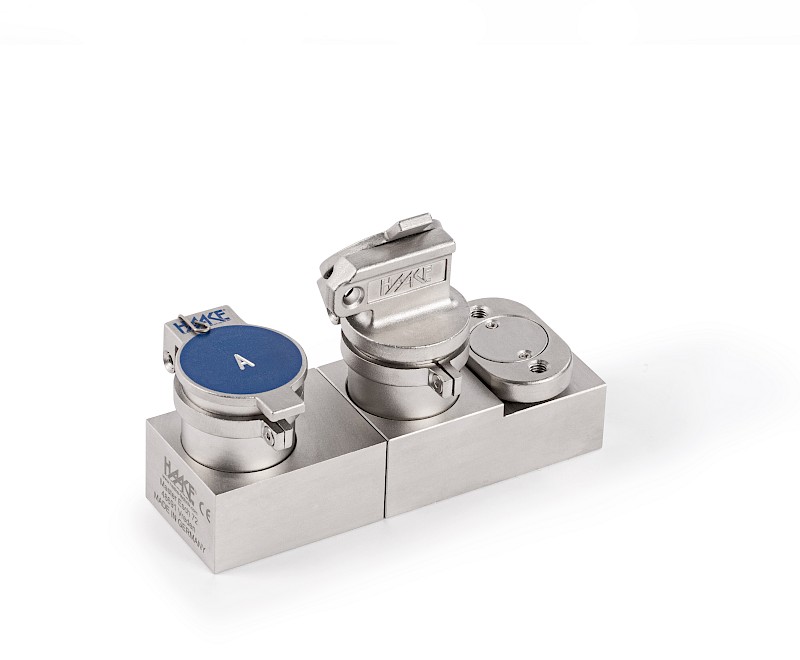
Access lock HST®-TZ2
The access lock HST®-TZ2 features 2 locks and is used in applications with accessible area. The operator takes the second, personal key into the danger zone. This personal key can also be used for other functions (e.g. teach mode), or the operator can carry the personal key along as described previously.
Before the personal key visible in the picture can be removed, a matching key must first be inserted and turned in the empty lock part. The personal key can now be removed, and the previously inserted key is trapped.
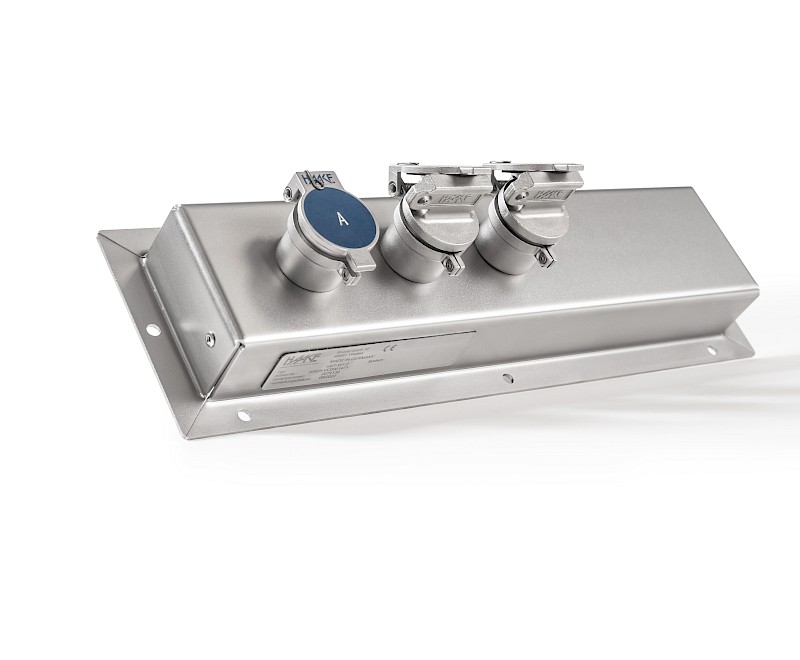
Key change device HST®-W5
The key change device HST®-W5 is used to increase the number of keys of a trapped-key interlocking system. One or more primary keys are inserted to release the desired number of secondary keys.
Typically, a key change device is installed as interlink between the switch and guard doors.

Key change device HST®-W10
The key change device HST®-W10 is used to increase the number of keys of a trapped-key interlocking system. One or more primary keys are inserted to release the desired number of secondary keys.
Typically, a key exchange station is installed as interlink between switch and guard doors.
Overview of your benefits
- Ease of use: Your employees can quickly and easily learn how to operatethe system regardless of their qualifications. This increases acceptanceand reduces motivation for manipulation.
- Individually coded keys and locks with a high number of codes: The operatingsequence is forcibly predetermined by the individual codedkeys and locks. The risk of accidents due to bypassing or incorrect operation is reduced to an absolute minimum.
- Individual and difficult-to-copy key design and controlled key issuance by HAAKE Technik: Within your facility or application, we prevent the existence of uncontrolled spare keys that would allow by passingof the safety function.
- Purely mechanical, without wiring: Our system can be easily and costeffectively installed, and the safety function is permanent, i. e. guaranteed even in the event of a power outage.
- Maintenance-free
- Simple retrofitting is possible: Already delivered systems can be easily expanded or supplemented afterwards.
- High mechanical robustness and resistance to harsh environmental conditions:You can confidently use our trapped-key interlocking system in environments where other protective devices quickly fail. Due to its very high robustness and durability, you also save costs for spare parts procurement.
Get advice from your international contact now!
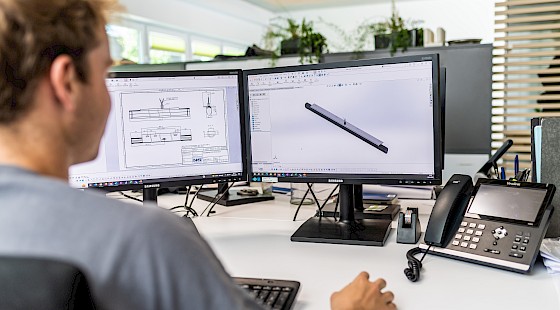
Key changing station secures system with multiple doors
Here we show the logical sequence through a key changing station, where the danger area of a machine plant with several doors cannot be entered from behind. To restart the machine, all keys must be returned. The basic principle of a key transfer system is that the key is held either in the tumbler or in the switch lock. The tumbler located on the safety guard is designed in such a way that the key transfer can only take place when the safety guard is closed again and fully locked. HST stands for Haake key transfer system. This product line from Haake Technik, secures the operators of dangerous machines and plants with locked separating safety devices (safety doors) with guard locking. Their function is to prevent the machine functions if the safety door is not closed and locked.
To activate the YouTube video, you must agree to the marketing cookies.
Adjust consentData Sheets
Get advice from your regional contact now!


